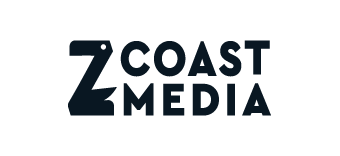Most of the time, before becoming a customer, a person will go through what’s called the marketing funnel (or buyer’s journey). It consists of different stages that flow from people poking around your website to doing something on your website.
Anyone who has a website wants visitors on their website to take certain actions. It’s common to want visitors to sign up for something, fill out a form, or buy a product.
When somebody takes an action you want them to take it’s called a conversion. The visitor converts from just browsing to doing that thing you’re hoping they do. It’s a marketer’s job to give visitors the push they need and inspire them to take that action.
Think about ordering a pizza online somewhere like Dominos.com. There are a few steps, a funnel, that visitors must go through before ordering a pizza. They must:
- Go to Dominos.com 🍕
- Start their order
- Choose the pizza/food item they want to eat
- Add the pizza/food item to their cart
- Place the order
There are other steps/actions that hungry pizza lovers can take between each of these mandatory steps, but it makes no difference to the funnel. For example, the customer could add a 2-liter drink to their order, or swap out the pizza for a pasta dish. But it isn’t a mandatory action to complete the order.
Why is it called a marketing funnel/buyer’s journey?
Because your marketing funnel represents the journey your prospective customers take from the moment they find out you exist to the moment they make a transaction with your business.
The marketing funnel consists of five stages:
- Awareness — This is the stage where people are looking for answers like “who delivers pizza near me?”
- Consideration — This the stage where people are doing research and comparing their options—Dominos, other pizza chains, local pizza joints.
- Conversion — This is the stage where people decide to become a customer and purchase a pizza
- Loyalty — This is the stage where customers are retained by instilling loyalty through things like rewards programs. Sticking with the pizza theme, one way Domino’s does a great job of this is via their “earn points for free pizza” program. It’s simple, it’s effective, and it’s smart. Customers create an account for a speedier checkout and earn points every time they purchase a pizza until they have enough to redeem a free one.
- Advocacy — This is the stage where customers take to platforms like Twitter and Instagram to tell people how bomb the pizza was they just ate with photos of the food, by tagging the pizza place they ordered from and stuff like that.
Industry, business model, audience, product, and pricing all play a role in the shape that a funnel takes, but all marketing funnels are built on the foundation of these five stages.
To help you understand how the marketing funnel (buyer’s journey) differs between B2B and B2C brands, we’re going to highlight some key points for ya.

The Difference Between a B2B and B2C Marketing Funnel
- B2C consumers often take a trip down the marketing funnel by themselves or with a small group of people they trust, such as family or friends
- B2B consumers set off down the marketing funnel as part of a larger group often made up of multiple people from multiple departments across the business
- B2C consumers may never interact with a sales rep (especially when we’re talking about ecommerce sites) and that’s totally normal
- B2B consumers often interact with a sales rep as they approach the lower end of the funnel and that’s totally normal too

The Multi-Dimensional Funnel
There’s some debate among marketing professionals about the relevancy of the marketing funnel because the funnel is no longer linear.
Leads come into the funnel at different stages for different reasons. For example, someone might jump straight into the conversion stage and buy a pizza from Domino’s because their best friends advocated for the brand and they trust the referral.
That’s why the term buyer’s journey is so hot when talking about the marketing funnel. It better describes what’s happening as more and more customers take advantage of technology and social media to do their own brand research.
However, when referring to the marketing funnel/buyer’s journey one term does not hold more weight than the other. Both are used by marketer’s and so both are relevant.
The marketing funnel is still a thing. It’s just evolving into a multi-dimensional process that involves less hand-holding and more gentle guidance than before.

What Makes A Funnel Worth Anything?
Data.
Marketing funnel reports will show you exactly where you’re losing customers. Let’s go back to our Domino’s example. This is what we said the funnel looks like for them:
- Go to Dominos.com
- Start their order
- Choose the pizza/food item they want to eat
- Add the pizza/food item to their cart
- Place the order
When you add a pizza to the cart, you get a popup to add some breadsticks (or some other side item) and a drink. Do customers have to purchase these suggested add-on items? No.
But it’s a good idea to track how many people abandon their order after this popup and how many people still purchase the pizza they put in their cart. Some people are turned off by pop-ups and some people just don’t pay attention – they may take a quick glance, think they have to spend more money to qualify for the delivery of the pizza they want and just decide to go make a sandwich instead.
Tracking this movement in the funnel tells Domino’s whether to keep the pop-up/how to trigger the pop-up based on the data they gather about whether this pop-up converts or acts as a roadblock for their customers.
There’s always room to improve the funnel and bump up those conversion stats but you must track the data first to make informed decisions that are going to impact the buyer’s journey.

Optimizing the Marketing Funnel
Optimizing the marketing funnel (buyer’s journey) starts with optimizing your landing pages. As much as you possibly can, you want to control the pages on which potential customer’s land and begin their journey with your website/business.
Landing pages are places for raising awareness about what you do and make potential customer’s go, “Hey! I want you to do that thing for me. Take my money!”
Here are some tips for optimizing your landing pages:
- Write strong headlines. They’re what you use to attract prospects to your landing page to begin with. Don’t be afraid to test a few when designing out your landing page and determine which option performs best with your audience.
- Highlight the benefits of what you do with your copy. A landing page is the place for your business to shine. Don’t blow it.
- Include relevant images that also highlight what your business does. Tie your copy and images together to paint a picture for your customers about what it is you do and why they should choose you over everyone else.
- Test fonts, colors, image sizes and layouts to better understand your customers respond to and engage more visitors
CTA’s (calls to action) are another crucial piece of your marketing funnel. It’s the tool you use to tell people what to do next after your landing page copy convinces them to sign up, buy something or do whatever it is you want them to do.
Your CTAs are what take people from the consideration stage of the marketing funnel to the conversion stage.
Here are some tips for optimizing your CTAs:
- Keep your CTA short and sweet
- Write a CTA that’s results-oriented – Instead of writing “Order Your Pizza Now,” try “Get Your Pizza Now”
- Use contrasting colors to make your CTA button standout
- Test, test, test! Test the colors of your CTA, test the copy of your CTA, test the placement of your CTA on the landing page and find out what performs best
Note: none of this (the landing page and CTA stuff) will matter if you’ve got a landing page that’s slow to load. People will bounce in a heartbeat if they’ve gotta wait.
And you can’t convert prospective customer’s if they never stick around long enough to see what your landing page is offering. Here’s a tip for checking your landing page load time:
- Use Google PageSpeed Insights to run a detailed report of the load time for all the pages on your website and make any necessary changes to improve speed
After taking steps to optimize your CTA you might think there’s nothing more you can do to optimize the funnel. Wrong. There are still a few actions you can take to make the conversion portion of the marketing funnel (buyer’s journey) as smooth as possible:
- Reduce the number of form fields your prospect needs to fill out to get whatever you’re offering. Only collect information that’s crucial for the purchase/acquisition they’re making.
- Incorporate a one-step signup option where people can register or log-in with using other profiles like their Google Account or Facebook
- Minimize the steps required for making a purchase/signing up for the service you offer
Like we said before, there’s always room to improve the marketing funnel (buyer’s journey). You just need know where to look.
To answer the title of this post, we think of the buyer’s journey (marketing funnel) as something that should be a seamless and memorable experience for potential customers/customers.
ZCM believes that simplicity is always best—it doesn’t matter if we’re talking about web design, content marketing, social media, or the marketing funnel. The foundation of every answer we give to every question you ask will be simplicity.
Because the fact of the matter is we have no business complicating any of these things beyond what the customer wants and what’s best for them. You don’t either.
Sorry to be frank but…not really. It’s the truth and it’s important that you hear it.
So, when you’re thinking about your marketing funnel/buyer’s journey and are wondering what you can do to make the most of it, ask yourself:
“How can I make this as easy as possible for prospects to navigate?”
If you’re always looking to make the buyer’s journey as simple as possible for prospective buyers, you’ll convert those prospects into customers and you’ll be just fine.
